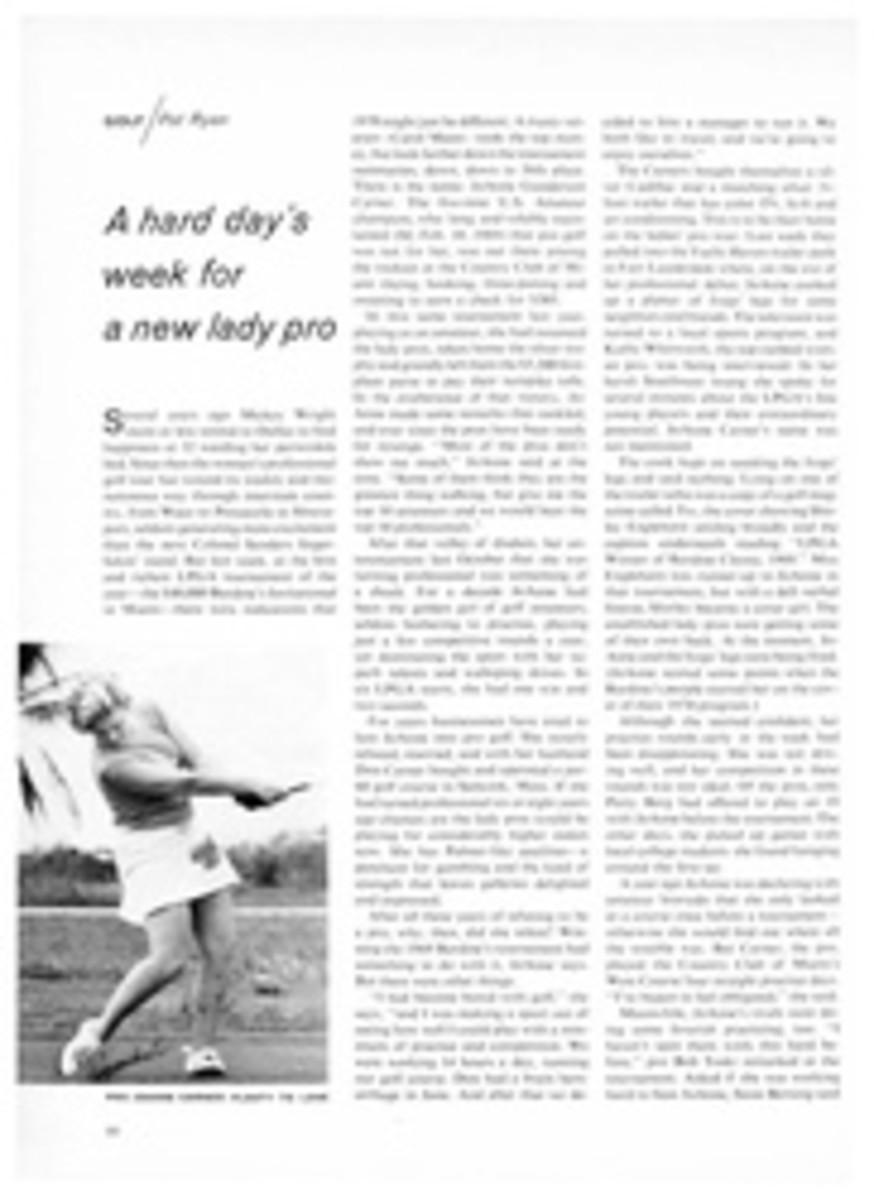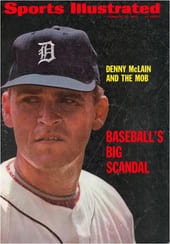
Speed is the enemy in hockey as CBS sticks with the puck and the punches
You must be the hatchet," said the director. And he generously pointed to a spot on his jugular where I might start work. Actually it is not so easy to find a place to lay the hatchet on television hockey broadcasting. Most hockey fans agree that the essence of their sport gets diluted in the tube. But when asked to explain, they lapse into incoherent French. CBS presents it all—the blood, the speed, the flying teeth—yet it adds up to only about half a sport. Unlike golf, which is theoretically impossible to televise, network hockey makes converts slowly; ratings have been becalmed for the last couple of years and sponsors are tepid.
After mulling around the Philadelphia Spectrum for a couple of days watching a hockey telecast production and mulling around the living room for two games after that, I have only a few incoherent English thoughts to throw into the pot. The first thing you notice is that the broadcasters themselves would probably rather talk about football. Not that they dislike hockey—indeed, they maintain a diplomatic affection for all the sports of man—but there does not seem a lot to say.
"This is a cameraman's medium," said Tony Verna, the director for the CBS Philadelphia telecast and a sports virtuoso. "You just hope he doesn't lose the puck." Verna sits behind a dazzling dashboard of monitors in the control truck, unable to use half his toys because of that confounded puck. He can rarely afford to switch cameras. Even a closeup at those speeds is likely to disorient the viewer, and a fresh angle might unhinge him completely. For which reason the slow-motion multiangled replays have more genuine hockey flavor than all the fast stuff put together.
In general, the quicker the sport the more monotonous the camera work. CBS had placed two cameras at center ice and one at each end, plus a hand-held job to be lugged up and down the aisles between groaning fans. (Most new arenas show splendid camera angles in the architect's renderings, but these locations get turned into box seats.) A good 80% of the shots were taken by good old No. 2 camera in mid-field, swinging back and forth like a tennis fan's head.
Much of the pleasure in hockey comes from the clanking of wood on bone. And for once TV does not attempt to deny that sport has its violent moments. We get all the major wars—viz., fine closeups of the two brawls in the Boston-Toronto match, where the game was suspended for the duration—but not the constant brush-fire skirmishes. If the camera lingers too lovingly over the humdrum carnage, it loses the puck for sure. "Give me 2, give me 3, give me 2," shouts Verna when trouble brews, and that 3 represents all the fight you get.
Speed is also the announcer's enemy. He has to rattle off jaw-breaking names with the dexterity of Danny Kaye and throw in enough Gatling-gun small talk to keep it from sounding like a roll call. Dan Kelly, who did play by play in Philadelphia, is a hockey specialist (no way it can be done by an amateur) and a marvel of succinctness; but the wit he indicated during the warm-up is pretty much lost in the gabble.
Bill Mazer, who did the think stuff, says it is wise to avoid getting bogged down in the "Pontet-Canet passes to Obolensky who passes back to Pontet-Canet" doldrums. Just say there's a scramble in the goal mouth and leave it at that. The only trouble is that casual viewers do need help sorting out the players, who are muffled to the chin like Tweedledee and replaced on the fly by identical twins.
Mazer adds that American fans are less hip than they think, so that one has to slip them some Dick and Jane information without seeming to. This can be tedious for the older students, but there is no help for it. On Canadian TV there is much more talk about the doings off camera, but in the U.S. everything is glued to that almighty puck.
The commercial problem that plagues continuous-action sports—it plagued soccer right off the air—has been smoothed over. Now TV simply stops the action. A league man signals the ref, who skates around abstractedly with the puck in his hand while the crowd howls. In case of a snafu, an ingenious use of tape brings you the goal you missed. (Actually, the time-out after each goal is enough for the tape to be slipped in unobtrusively. But if you ever find yourself unaccountably down ice, it means the tape ran over the live action.)
Canadian fans, a haughty stiff-necked lot, insist that their telecasts are better than ours. Verna disputes this. He says the Canadians take undue risks—isolating the goalie, for instance, when a shot is due—and end up with egg on their tie if no shot is made. This kind of scene shifting sounds interesting, but Verna claims he even does more cutting from camera to camera than the Canadians do. Since he had only really let himself go, cuttingly speaking, during the national anthem (God Bless America, it seems, in Philadelphia), I had to assume the Canadians have a certain monotony problem of their own.
There may be a better way to televise hockey, and Canadian readers undoubtedly know what it is. (Go ahead and write—my son collects the stamps.) But no hatchet goes to the U.S. technicians who, to this horse-and-buggy eye at least, are still wizards, working in this case a slightly sticky deck.

